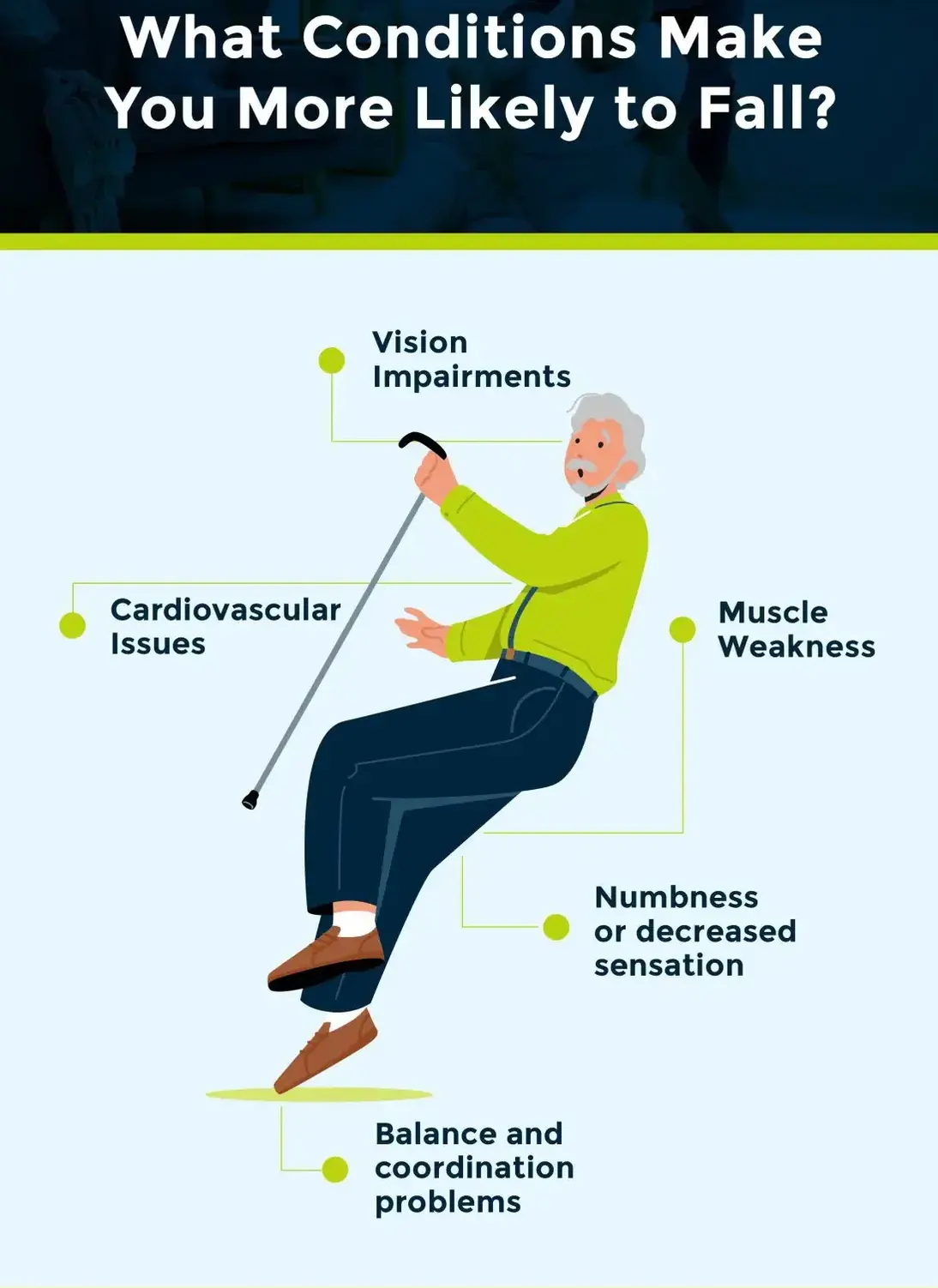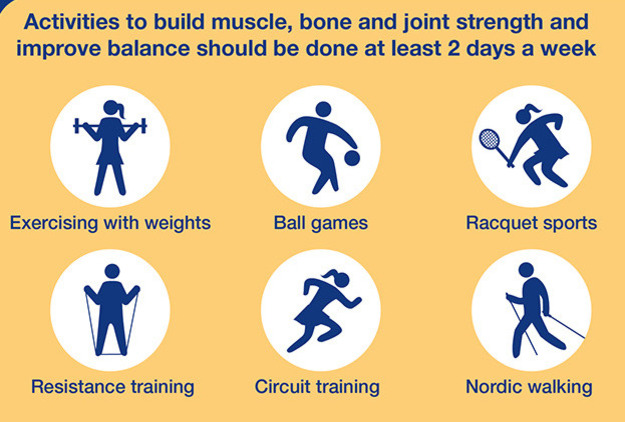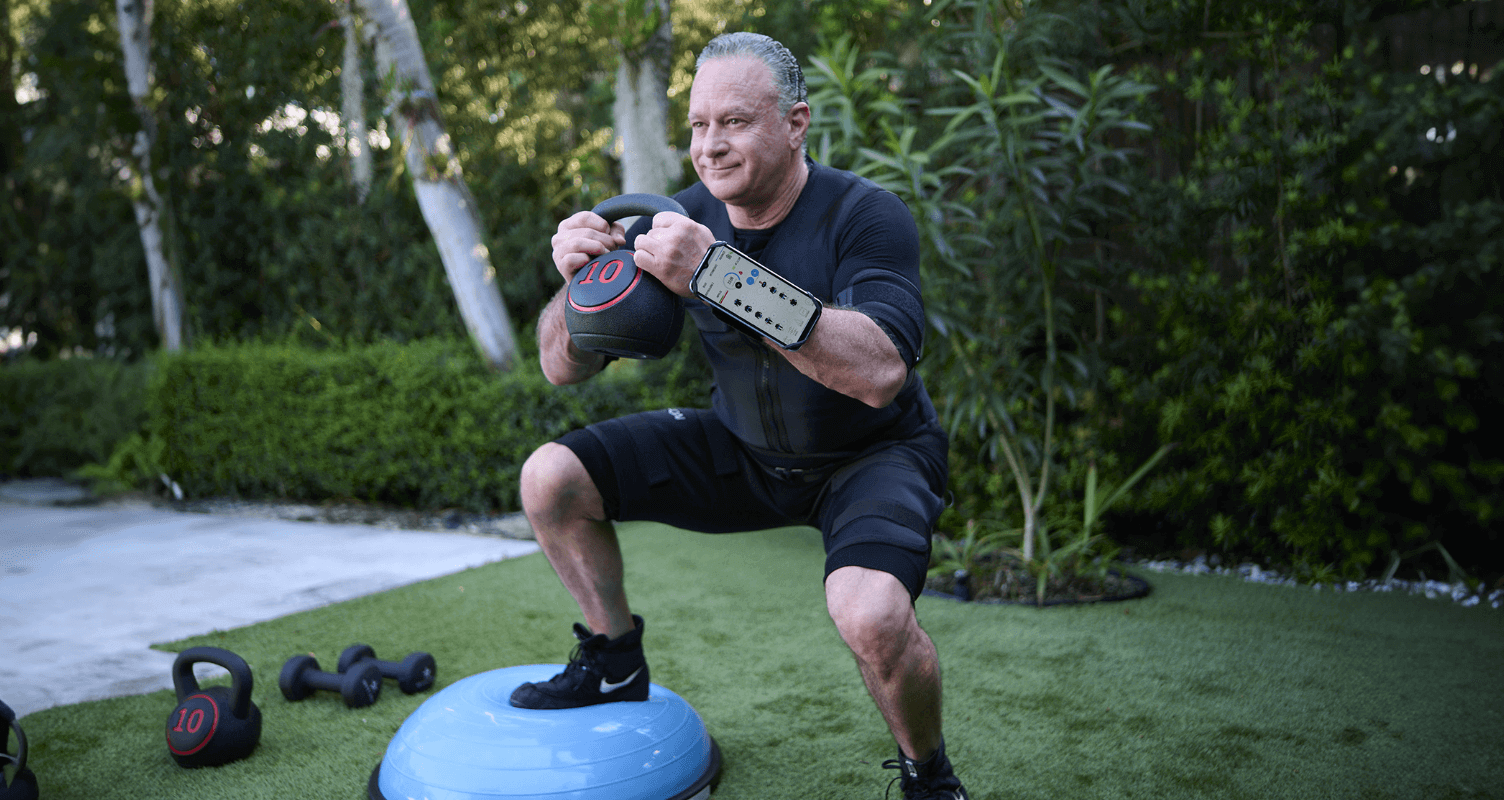As we age, maintaining balance, strength, and mobility becomes increasingly important to reduce the risk of falls. According to the World Health Organization, falls are the second leading cause of unintentional injury deaths worldwide, with older adults being particularly vulnerable. Falls often result in broken bones, head injuries, and reduced confidence in daily activities. While traditional exercise routines can help, Electro Muscle Stimulation (EMS) training offers a unique and effective solution to strengthen the body and improve stability, ultimately reducing the likelihood of falls. EMS is not just a fitness tool – it's a preventative measure that can enhance overall quality of life for older adults.
The Science Behind EMS Training and Fall Prevention
EMS training works by sending electrical impulses to the muscles, causing them to contract and simulate natural muscle movements. These contractions target deep muscle fibers that are often difficult to engage with traditional exercises, making EMS particularly effective for older adults who may struggle with conventional workouts. As a result, EMS training helps:
Build Muscle Strength: Stronger muscles provide better support for joints, enhancing overall stability. This increased strength is especially important for the legs, which play a crucial role in maintaining balance during standing and walking.
Improve Coordination: By activating specific muscle groups, EMS helps refine motor control and coordination. Better coordination can make movements smoother and more deliberate, reducing the likelihood of tripping or missteps.
Enhance Postural Stability: EMS strengthens core muscles, which play a critical role in maintaining balance and posture. A strong core helps prevent slouching or leaning, both of which can contribute to instability.
By addressing these key areas, EMS training can significantly lower the risk of falls among older adults while also boosting confidence in everyday movements.

Key Benefits of EMS Training for Older Adults
EMS training offers numerous benefits tailored to the needs of older individuals, making it an ideal choice for fall prevention:
1. Strengthens Weak Muscles
As people age, muscle mass naturally decreases, a condition known as sarcopenia. EMS training counteracts this by engaging and strengthening both fast-twitch and slow-twitch muscle fibers. Stronger leg and core muscles improve balance and make activities like walking, standing, and climbing stairs safer. This enhanced muscle support also reduces strain on joints, making movements smoother and more controlled.
2. Improves Reaction Time
Falls often occur due to delayed reactions to slips or sudden movements. EMS enhances neuromuscular connections, allowing older adults to react more quickly and prevent a potential fall. Faster reaction times can be the difference between catching oneself and experiencing a harmful tumble.
3. Increases Joint Stability
Weak or unstable joints can lead to missteps and falls. EMS training stabilises the joints by strengthening the surrounding muscles, reducing the likelihood of injuries caused by imbalance. Stable joints also contribute to smoother movements, enhancing overall mobility and reducing pain.
4. Reduces the Risk of Osteoporosis-Related Injuries
For those with osteoporosis, falls can result in fractures or more severe injuries. EMS training promotes bone density and muscle strength, providing an extra layer of protection for fragile bones. This makes everyday activities safer and allows older adults to maintain their independence longer.
5. Accessible and Low-Impact
Unlike high-intensity workouts, EMS training is gentle on joints and suitable for individuals with limited mobility or chronic conditions. This accessibility makes it a practical option for older adults, even those who may not feel comfortable in a traditional gym setting. EMS can be tailored to individual needs, ensuring that it's both safe and effective.

How EMS Improves Balance and Mobility
Balance and mobility are essential for preventing falls, and EMS training specifically targets these areas:
Core Strength: A strong core is the foundation of good balance. EMS training activates the deep abdominal and lower back muscles, improving postural alignment and stability. This results in better support for the spine and reduces the likelihood of losing balance during sudden movements.
Proprioception Training: EMS enhances proprioception—the body's ability to sense its position in space. This helps older adults stay aware of their movements and avoid missteps. Improved proprioception also boosts confidence, as individuals feel more secure in their ability to move safely.
Functional Movements: EMS can be combined with balance-focused exercises, like standing on one leg or walking on uneven surfaces, to simulate real-life scenarios and improve mobility. Practicing these movements under the guidance of EMS ensures that the muscles required for balance are fully engaged and strengthened.

Tips for Older Adults Starting EMS Training
If you're considering EMS training to improve your strength and balance, follow these tips to ensure a safe and effective experience:
Start Slow: Begin with low-intensity sessions to allow your body to adapt to the stimulation. Gradually increase the intensity as your strength and endurance improve. This gradual approach ensures that you avoid overexertion while still reaping the benefits.
Focus on Functional Exercises: Pair EMS with movements that mimic daily activities, such as standing up from a chair or stepping onto a curb. These exercises help improve strength and balance in a way that directly translates to real-life scenarios.
Be Consistent: Regular sessions, ideally 1-2 times per week, are key to seeing long-term benefits. Consistency allows your muscles and neuromuscular system to adapt and grow stronger over time, reducing the risk of falls.
Real-Life Applications of EMS for Fall Prevention
EMS training is already being used in various settings to help older adults maintain their independence and avoid falls:
Rehabilitation Centres: EMS is employed as part of physical therapy programs to retrain muscles after injuries or surgeries. This helps patients regain mobility and confidence in their movements.
Home-Based Programs: Portable EMS devices allow older adults to train safely at home, making it a convenient option for those with limited mobility or who prefer exercising in a familiar environment.
Preventative Health Programs: Many fitness centers now offer EMS sessions specifically designed for older adults, focusing on balance, strength, and mobility. These programs often include group classes, fostering a sense of community and shared progress.
Success Stories: Older Adults Who Benefited from EMS Training
John, a 72-year-old retiree, struggled with frequent falls due to weak leg muscles and poor balance. After three months of EMS training, he noticed significant improvements in his stability and confidence while walking. He now feels more comfortable navigating uneven terrain and enjoys outdoor activities again.
Mary, a 68-year-old with osteoporosis, used EMS training to strengthen her muscles and protect her fragile bones. She reported feeling more secure when climbing stairs and less anxious about falling. Mary credits EMS for giving her the strength and confidence to travel independently again.
These success stories highlight the transformative potential of EMS training for older adults.
The Link Between Aging and Fall Risk
As we age, several physiological changes occur that can increase the risk of falls. These changes include:
Loss of Muscle Mass: Sarcopenia, or the age-related decline in muscle mass, reduces overall strength and stability. This can make it more challenging to perform simple movements like standing up or walking on uneven surfaces.
Reduced Bone Density: Conditions like osteoporosis make bones more fragile, increasing the risk of fractures during a fall.
Decreased Balance and Coordination: The vestibular system, which helps maintain balance, can deteriorate with age, making older adults more prone to losing their footing.
Slower Reflexes: As the body's reaction time slows, it becomes harder to catch oneself during a slip or stumble.
Understanding these changes highlights the importance of targeted interventions, like EMS training, that address the underlying causes of fall risk.

Comparing EMS to Traditional Exercises
While traditional exercises like yoga, pilates, and strength training are effective for improving balance and strength, EMS offers unique advantages for older adults:
Time Efficiency: EMS sessions typically last only 20-30 minutes but deliver the same benefits as longer traditional workouts, making it ideal for those with busy schedules or limited energy.
Accessibility: For individuals with mobility issues or joint pain, EMS provides a low-impact alternative that doesn't strain the body.
Targeted Activation: EMS stimulates deep muscle fibers that are often difficult to engage with conventional exercises, ensuring a comprehensive workout.
This combination of efficiency, accessibility, and effectiveness makes EMS a valuable tool for fall prevention in older adults.
The Psychological Impact of Fall Prevention
The fear of falling can have a significant psychological impact on older adults, leading to reduced confidence, social isolation, and even depression. EMS training not only strengthens the body but also restores confidence in one's ability to move safely.
Improved Confidence: As individuals see progress in their balance and strength, they feel more secure performing daily activities.
Increased Independence: Reduced fall risk means older adults can maintain their independence longer, whether it's grocery shopping, gardening, or taking a walk.
Enhanced Quality of Life: Knowing they're less likely to fall, individuals often re-engage in hobbies and social activities they once avoided out of fear.
Addressing the emotional and mental aspects of fall prevention is just as important as the physical benefits, and EMS training excels in both areas.
How EMS Training Fits Into a Holistic Fall Prevention Plan
EMS training works best when combined with other fall prevention strategies, creating a holistic approach to safety and wellness:
Home Modifications: Removing tripping hazards like loose rugs, adding grab bars in bathrooms, and ensuring adequate lighting can significantly reduce fall risks.
Regular Health Checkups: Vision impairments, medication side effects, and untreated health conditions can all contribute to falls. Regular checkups help identify and address these issues.
Nutritional Support: A diet rich in calcium, vitamin D, and protein supports bone density and muscle health, enhancing the benefits of EMS training.
Balance Exercises: Activities like tai chi and yoga complement EMS by further improving balance and flexibility.
By incorporating these strategies alongside EMS, older adults can create a comprehensive plan for preventing falls and staying active.

The Role of Caregivers and Family Members
Caregivers and family members play a crucial role in encouraging older adults to adopt EMS training as part of their fall prevention strategy:
Providing Emotional Support: Encouraging words and positive reinforcement can help older adults overcome initial hesitation or fear of trying something new.
Scheduling Sessions: Assisting with scheduling EMS training sessions ensures consistency, which is key to seeing long-term benefits.
Monitoring Progress: Helping track improvements in strength, balance, and mobility can motivate older adults to stick with their training program.
Family involvement not only strengthens relationships but also ensures that older adults stay committed to their fall prevention journey.

The Future of EMS Training for Older Adults
Advancements in EMS technology are making it even more accessible and effective for older adults. Portable devices, user-friendly interfaces, and customisable programs tailored to individual needs are transforming EMS into a mainstream solution for fall prevention.
AI-Driven Feedback: New EMS systems will be able to use artificial intelligence to provide real-time feedback on muscle activation and progress, allowing for more precise and personalised training.
Integration with Wearables: Wearable devices that track movement and balance can now be paired with EMS systems to monitor and enhance fall prevention efforts.
Remote Training Options: For individuals in remote areas or with limited mobility, virtual EMS training programs bring professional guidance directly to their homes.
These innovations are paving the way for a safer and more active aging experience for millions of older adults worldwide.
Empowering Older Adults with EMS Training
Fall prevention is a critical component of healthy aging, and EMS training provides an innovative and effective solution. By strengthening muscles, improving balance, and boosting confidence, EMS empowers older adults to live independently and enjoy life to the fullest.
Whether used as a standalone tool or part of a holistic wellness plan, EMS training offers a proactive approach to reducing fall risks and enhancing quality of life. If you or a loved one is looking for a safe and efficient way to prevent falls, EMS could be the key to unlocking a stronger, more stable future.

